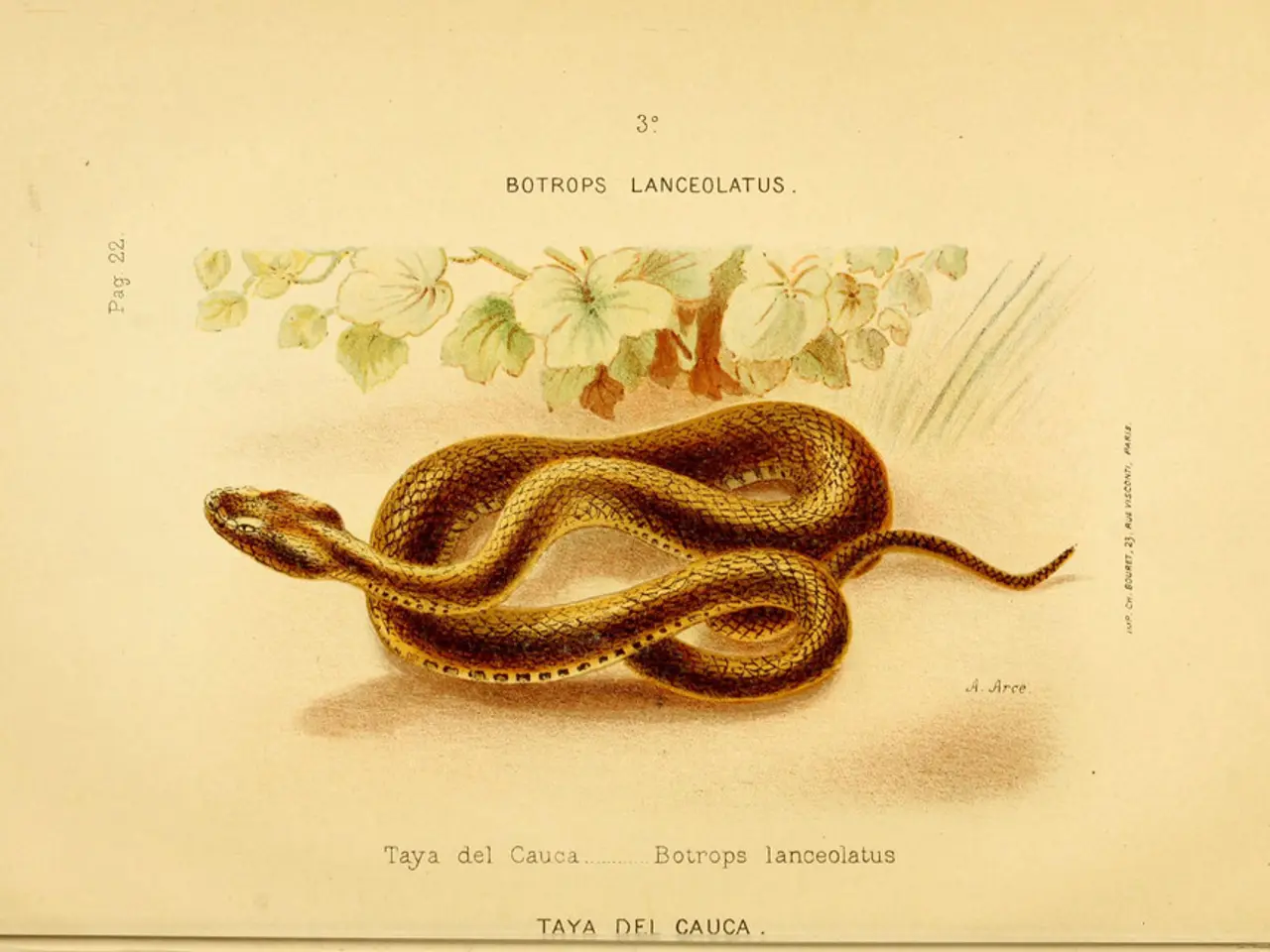Exploring the Realm of Venomous Creatures: An In-Depth Look at Poisonous Animals
Poisonous animals, those that contain toxins harmful when ingested, touched, or inhaled, play a significant role in the natural world. These creatures use their toxic arsenal for defense and survival, deterring predators and gaining an edge in the competition for resources.
One fascinating example is the Monarch Butterfly (Danaus plexippus). As a caterpillar, it feeds on milkweed, a plant that contains cardiac glycosides. These substances remain in the butterfly's system, making it unpalatable to birds and a warning of its toxic nature. The bright colours and distinct patterns that adorn many poisonous animals, such as the Monarch, often serve as a warning signal to potential predators.
The Hooded Pitohui (Pitohui dichrous) from Papua New Guinea is another remarkable example. This bird carries batrachotoxin in its feathers and skin, a toxin that can be fatal to humans if ingested or absorbed through the skin. Similarly, the blue-ringed octopus (Hapalochlaena spp.) is known for its glowing blue rings, which appear when the animal is threatened, and its potent tetrodotoxin.
Marine animals, such as pufferfish (Family: Tetraodontidae), also hold toxic secrets. These creatures contain tetrodotoxin, a toxin that can lead to death in humans due to respiratory paralysis if improperly prepared. Another marine example is the blue dragon sea slug (Glaucus atlanticus), a small sea slug found in Spain, and the Jakobskraut- or Karminbär moth caterpillars that sequester toxins from the ragwort plant.
The toxins produced by these animals vary, with neurotoxins affecting the nervous system, cardiotoxins targeting the heart, cytotoxins damaging cells, and hemotoxins affecting the blood. These toxins have also found their way into human medicine, with cardiac glycosides from animals like the Monarch being adapted for heart medications.
Tetrodotoxin, a toxin found in some poisonous animals, is being researched for its potential as a painkiller. Batrachotoxin, found in certain poisonous animals, helps scientists understand nerve function and ion channels.
However, it's important to note that poisonous animals differ from venomous ones, which inject toxins directly through bites or stings. In rare cases, humans can die from touching a poisonous animal if the toxins are absorbed through the skin. An example of this is the Spanish fly (Lytta vesicatoria), which produces cantharidin, a toxic compound that causes severe blistering on contact and internal damage if ingested.
The evolution of poison in animals serves two main purposes: defense and competition/survival. By deterring predators and gaining an edge in the struggle for resources, these toxic creatures play a crucial role in the balance of nature. Understanding the mechanisms behind these toxins can not only shed light on the workings of the natural world but also lead to breakthroughs in human medicine.
Read also:
- Peptide YY (PYY): Exploring its Role in Appetite Suppression, Intestinal Health, and Cognitive Links
- Toddler Health: Rotavirus Signs, Origins, and Potential Complications
- Digestive issues and heart discomfort: Root causes and associated health conditions
- House Infernos: Deadly Hazards Surpassing the Flames








